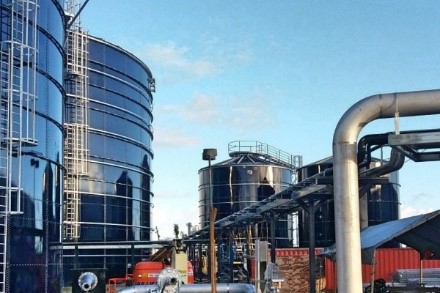 Disposal of waste biomass, sludges, and slurries high in organic content is often a challenge for producers, manufacturers, and waste treatment facilities alike. With ENVTEK technologies, one can effectively manage such materials and even recover value from such seemingly useless waste products. The potential to employ anaerobic treatment with profitable biogas generation is present in industrial, agricultural, and municipal applications.
Disposal of waste biomass, sludges, and slurries high in organic content is often a challenge for producers, manufacturers, and waste treatment facilities alike. With ENVTEK technologies, one can effectively manage such materials and even recover value from such seemingly useless waste products. The potential to employ anaerobic treatment with profitable biogas generation is present in industrial, agricultural, and municipal applications.
Wet or dry food scraps and production wastes, tapioca pulp from starch or ethanol factories, waste with high suspended matter from fish canning, dairy and bioethanol industries, together with many more other substrates have successfully been used as feedstocks in our anaerobic processes.
The volume of sludge produced in a WWTP is only about 1% (dewatered sludge is 0.5‰) of the volume of influent wastewater to be treated. To manage WWTPs effectively and efficiently, it is absolutely necessary to extract waste sludge, including inert solids and excess biomass, in order to prevent their accumulation within the system.
In the wastewater handling units in a WWTP the types of sludge produced are:
• primary sludge – produced by settleable solids removed from raw wastewater in primary settling; characterised by high putrescibility and good dewaterability when compared to biological sludge; TS content in primary sludge is in the range 2-7%
• secondary sludge (also called biological sludge) – produced by biological processes such as activated sludge or biofilm systems; contains microorganisms grown on biodegradable matter (either soluble or particulate), endogenous residue and inert solids not removed in the primary settling (where a primary settler is present) or entering with the raw wastewater (where no primary settler is present); TS content in secondary sludge is in the range 0.5-1.5%
• chemical sludge – produced by precipitation of specific substances (i.e. phosphorus) or suspended solids.